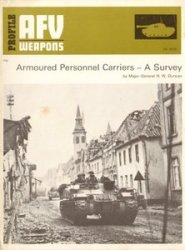Finding an archaeological site on the floor of the deep ocean, like finding one anywhere else, requires background research and patient, systematic, sometimes very boring fieldwork.
Although prehistoric and early historic once-terrestrial sites are found on the seabed - swamped prehistoric villages, sunken towns like Port Royal, the Jamaican pirate haven that sank into the ocean during an earthquake in 1692 ACE - most deep-ocean sites represent ships that floated and aircraft that flew over the ocean surface. Background historical research is a vital first step in locating such sites, and for that matter in even discovering that they exist. Commercial records, military records, the logs of ships, ship losses reported in newspapers and the diaries of passengers and their relatives, all can help identify wrecks worth searching for, and then narrow the search to something smaller than an entire ocean.
As an example of shipwreck research, consider the Sussex, a seventeenth-century British warship that is currently being studied by Odyssey Marine Exploration. In the mid-1990s an independent researcher discovered papers in a Paris archive describing the loss of a British ship in the Strait of Gibraltar in 1694. The ship, named the Sussex, was recorded as carrying a large cargo of coinage meant for the Duke of Savoy, a duchy in what are now northern Italy and southeastern France. The researcher offered the information to Odyssey, which purchased it and launched a major archival study to reconstruct the circumstances and location of the wreck. This involved research in the United Kingdom, France, and Spain, which eventually verified that the Sussex had indeed gone down in the Strait, provided a detailed description of the ship and its sinking, and gave a rough fix on where its loss might have occurred. Although the area of highest probability was fairly concentrated, the research indicated that the wreck might lie anywhere in an area some 400 square miles in extent.
Field survey began with marking out grid lines in search blocks. At the same time, a bathymetric survey mapped the contours of the floor which in the Strait is around 800 m deep. Some mapping information was already archived and available; other data had to be collected anew using echo-sounding equipment. Then Odyssey launched the detailed survey, using side-scan sonar. This involves towing a sensor behind a ship along each grid line, just above the seabed. The sensor emits sonar signals and receives them as they bounce back, measuring the distance to objects around and below it. Modern side-scan sonar produces an accurate and detailed picture of the sea bottom, but it is very time consuming; Odyssey’s research ship steamed back and forth like a tractor plowing a field, eventually covering the entire 400-square-mile block and plotting 419 anomalies on the sea bed.
From a vessel on the ocean surface equipped with an inspection ROV carrying video cameras, each of the anomalies that looked worthy of further investigation was visually inspected to determine what it was. Some anomalies turned out to be geological features; some were big coils of wire, others 55-gallon drums. Some were aerial bombs. Others really were shipwrecks, including what appear to be Roman and Phoenician wrecks, which were carefully recorded for future reference. One site - at a depth of 811 m (2660 ft) was a long mound on the seafloor dotted with heavily concreted cannon, consistent with those aboard the Sussex.




 World History
World History









